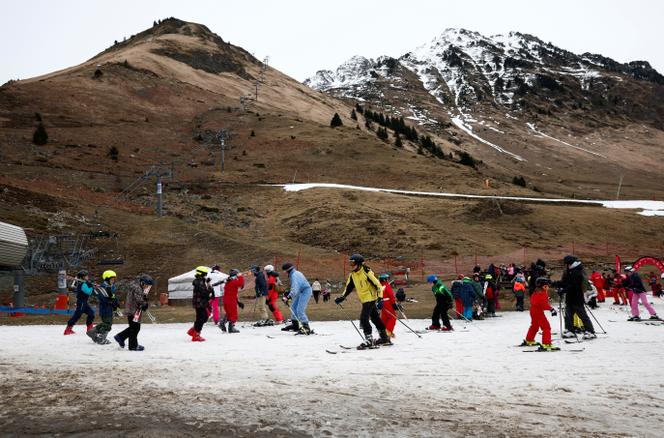


The World Meteorological Organization and Copernicus, the European Union's Earth observation program, signed a statement on April 22 warning of the extent of global warming on the continent. "The three warmest years on record for Europe have all occurred since 2020, and the ten warmest since 2007," they read, before making a stark observation: "Europe is the fastest warming continent, with temperatures rising at around twice the global average rate." The publication highlights a fundamental aspect of climatology, made all the more crucial in an era marked by human-induced change: Not all parts of the planet are warming in the same way.
"It's one of the characteristics of the Earth system that climate changes are not uniform across space, with temperature variations more marked on the continents and near the Arctic," said Aurélien Ribes, a researcher at Météo-France's National Meteorological Research Centre (CNRM, CNRS). "This was the case during the last ice age, and it is also the case today, with major differences in the amplitude of human-induced global warming depending on the zone."
In its sixth assessment report, the Intergovernmental Panel on Climate Change (IPCC) has identified the areas where temperatures are rising fastest. Semi-arid regions, those at mid-latitudes such as large parts of the US and China, and regions affected by the South American monsoon in Brazil are all experiencing a rise in temperature twice as fast as the global average.
The Arctic is expected to experience the greatest temperature increase on the coldest days, about three times the rate of global warming, the scientists said, while equatorial regions are experiencing less rapid change, and some areas are cooling, for example part of the North Atlantic south of Greenland, owing to a slowdown in heat evaporation. Europe is bearing the brunt of this reality. According to Copernicus data, it has warmed by 2.3°C since the pre-industrial era, compared with 1.2°C to 1.3°C for the global average.
Polar amplification, which has been studied for a very long time and is very significant in the Arctic, is mainly caused by a positive feedback loop: Melting ice reduces albedo, in other words, the earth's ability to reflect the sun's rays. Europe's greater warming is partly explained by this drop in albedo in the northernmost regions and in Central and Eastern European countries, where snow cover is declining.
The other reason lies in a phenomenon common to all land masses: Soils react faster than oceans. The warming of the earth's surface is expected to be 1.5 times faster than that of the oceans, with a "probable variation" of 1.4 to 1.7, the IPCC report said. This physical property is explained by the ability of soils to heat up more quickly and then return energy more directly to the atmosphere than the sea. "It's the consequence of a reality that everyone can see: On a beach, the sand heats up faster than the water next to it," said Jean-Pascal van Ypersele, former IPCC vice president and professor of climatology at the Catholic University of Louvain. "It takes much more energy to heat a cubic meter of water than a cubic meter of sand or earth, not to mention the fact that the sea is constantly being stirred up by a number of phenomena, notably upwelling [colder water slowly rising to the surface], which is not the case with soil, and that it does not release energy in the same way."
You have 50.78% of this article left to read. The rest is for subscribers only.
